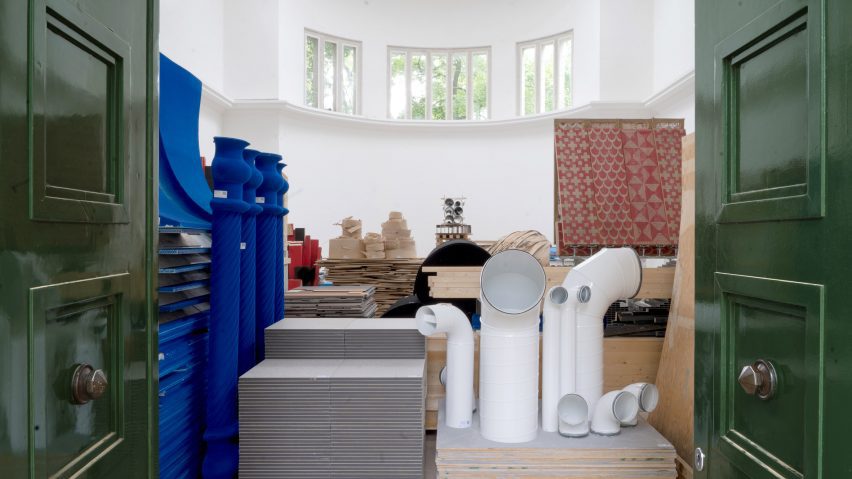
German pavilion becomes material bank for Venice repair projects
Germany's contribution to this year's Venice Architecture Biennale is a huge store of materials recovered from last year's art biennale, all set to find new uses around the city.
Materials recovered from over 40 installations have been collected and catalogued, ready to be used for repairing and upgrading buildings and public spaces all over Venice.
With the title Open for Maintenance, the exhibition is billed as "an action framework for a new building culture".
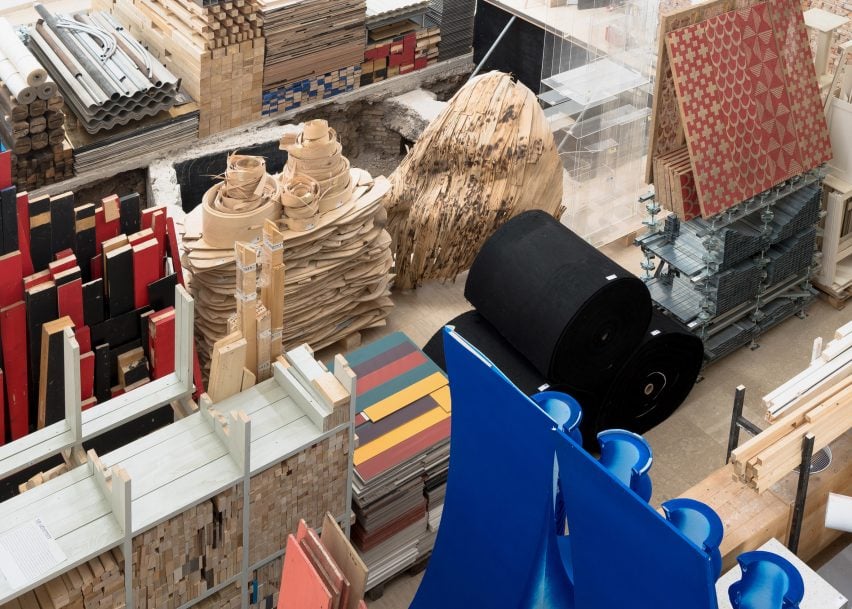
"The key word is maintenance," said architect Petter Krag, who is one of eight members of the curatorial team.
"We wanted to show how, for architects like myself, there are other ways of working with materials," he told Dezeen during a tour of the pavilion.
"We can develop new ways of reusing materials for repair work."
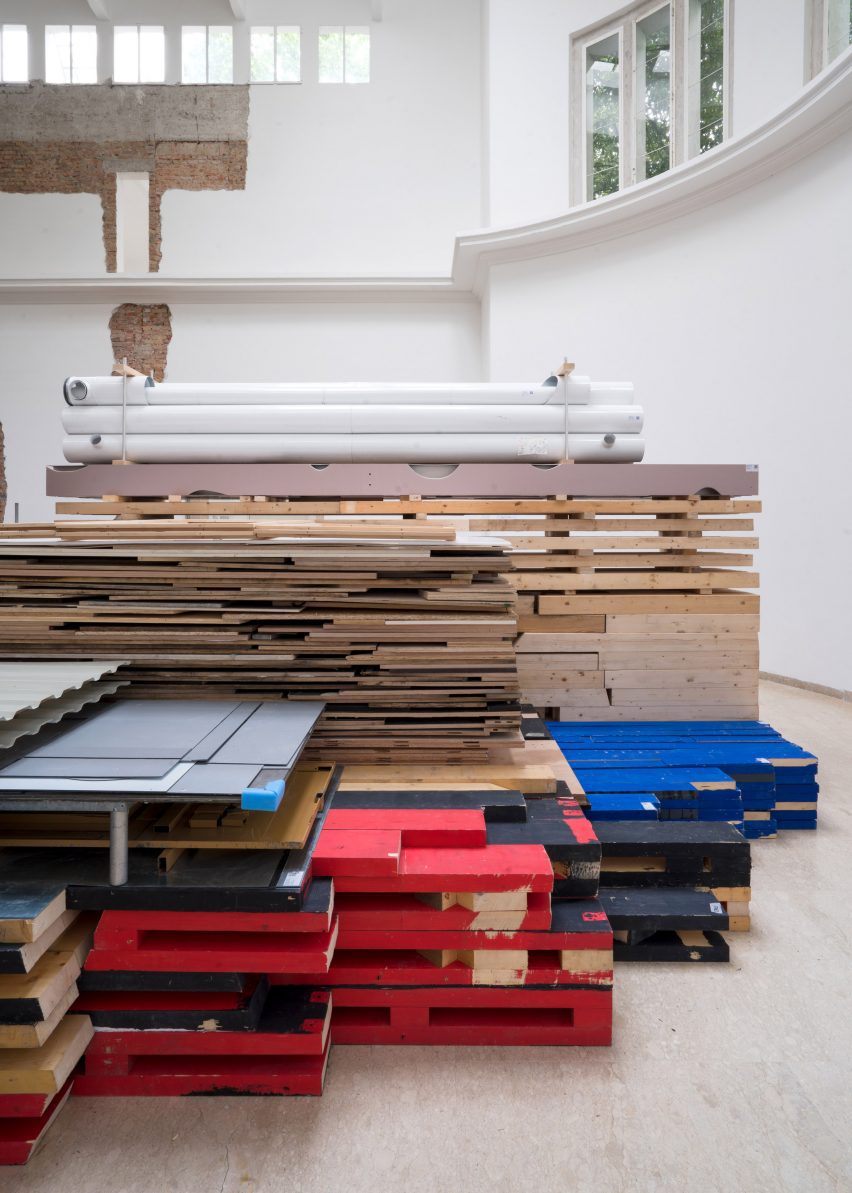
The curatorial team includes four architects – Krag and Juliane Greb represent Büro Juliane Greb, while Anne Femmer and Florian Summa are from the Leipzig-based practice, Summacumfemmer.
They are joined by Franziska Gödicke, Christian Hiller, Melissa Makele and Anh-Linh Ngo, who are editors and contributors for the German architecture magazine ARCH+.
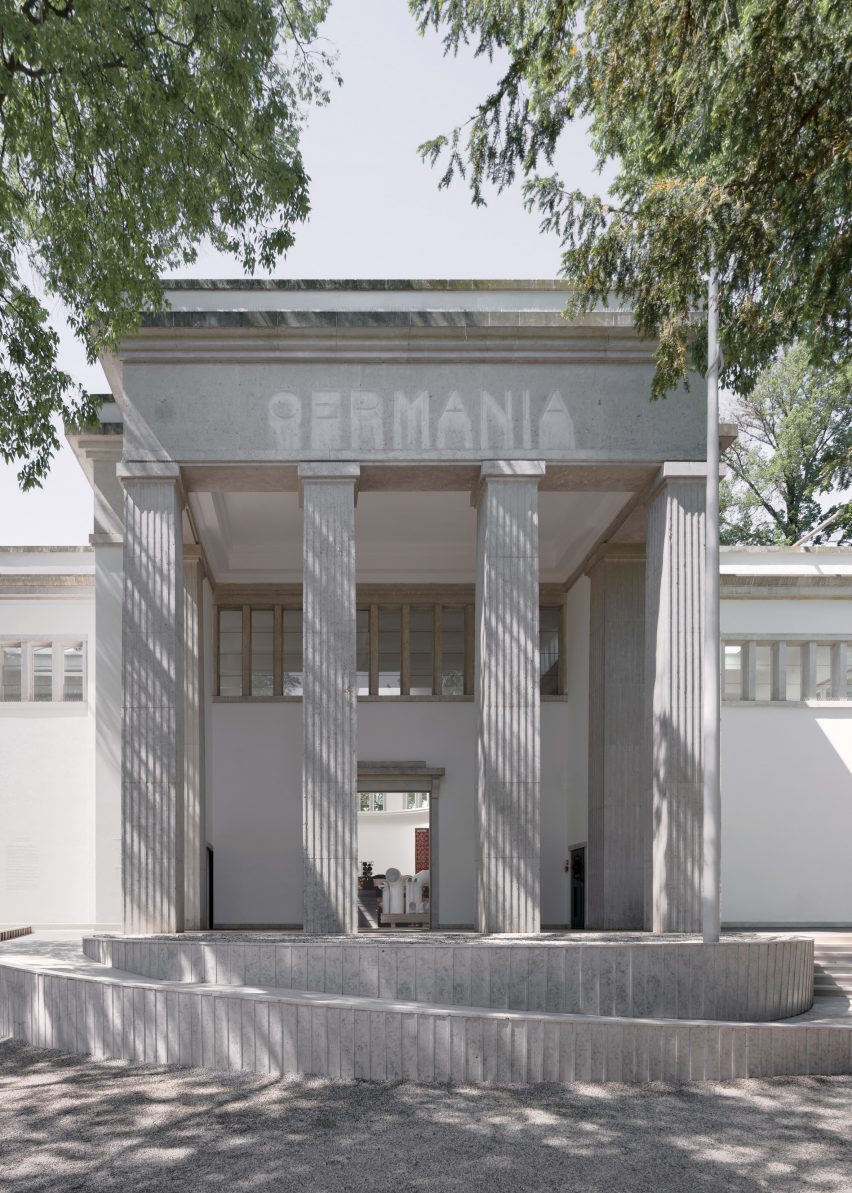
The German pavilion show consists of several elements. These include the material store and a workshop where visitors can see some of these materials being repurposed.
A new entrance ramp improves accessibility into the building for workers and those with limited mobility, while a toilet facility promotes gender equality and waste reduction.
Other additions include a kitchenette and a meeting space, both inviting people to come together for discussion. There is also a digital component. The curators worked with a circular-economy-focused organisation, Concular, to digitise the material bank so that it can be browsed online just like a retail website.
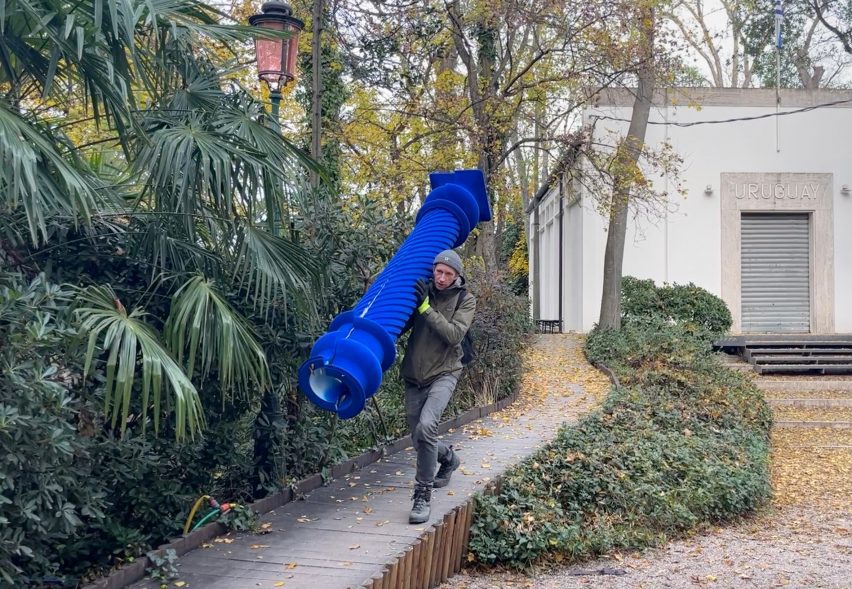
All of the installations take cues from the Instandbesetzung movement of 1980s Berlin, which refers to a practice known as "maintenance squatting".
This form of activism emerged during the cold war, when young people were moving to Berlin to avoid being drafted. Faced with a housing shortage, many chose to occupy and renovate empty properties along the Berlin Wall.
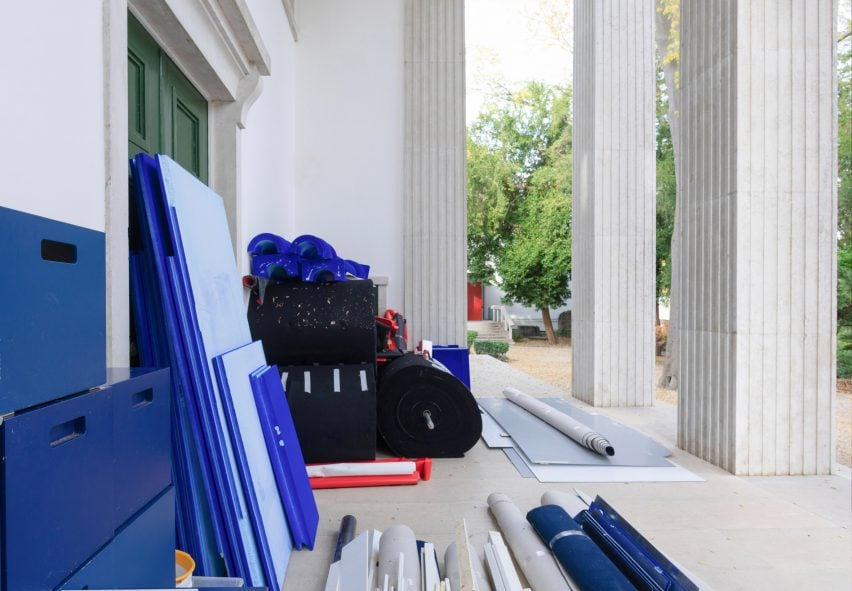
The curators wanted to explore how similar practices of care might be replicated today.
"Instead of doing an exhibition, our idea was to bring the idea of squatting to this pavilion," says Melissa Makele, who works as an editor at ARCH+.
"Our interventions are intended to make this pavilion into useful infrastructure, rather than a place of national representation," she told Dezeen.
"They allow us to collaborate with activist groups from Germany and Venice on practices of caring, repairing and maintaining."
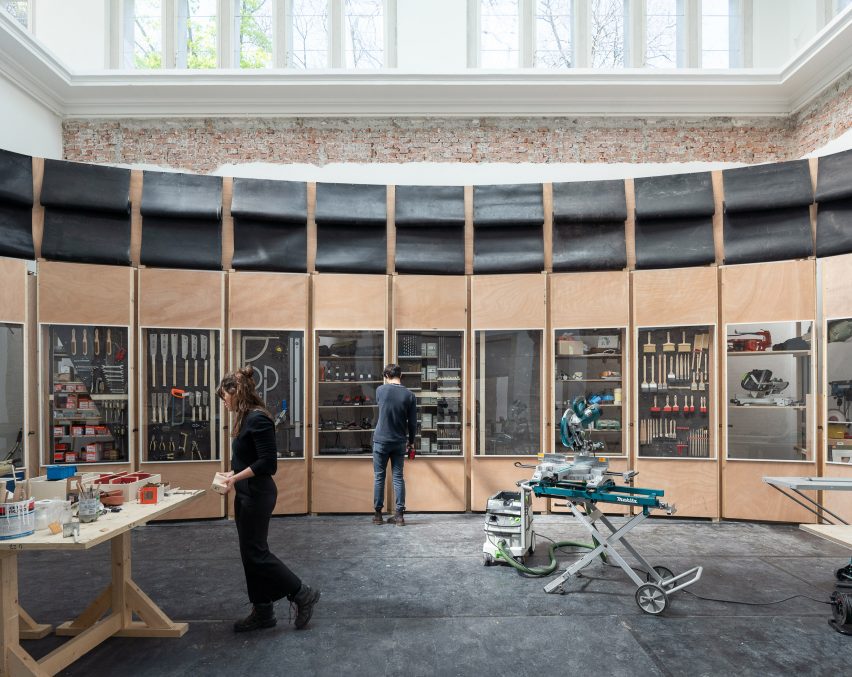
Over the six-month duration of the biennale, the curators are working with organisations including Venice-based Assemblea Sociale per la Casa and Munich-based social cooperative Bellevue di Monaco on projects across the city.
One project will help residents of Casette, a working-class Venice housing estate, to renovate their homes, while another will create a structural intervention at the squatted Pandora hospital in Mestre.
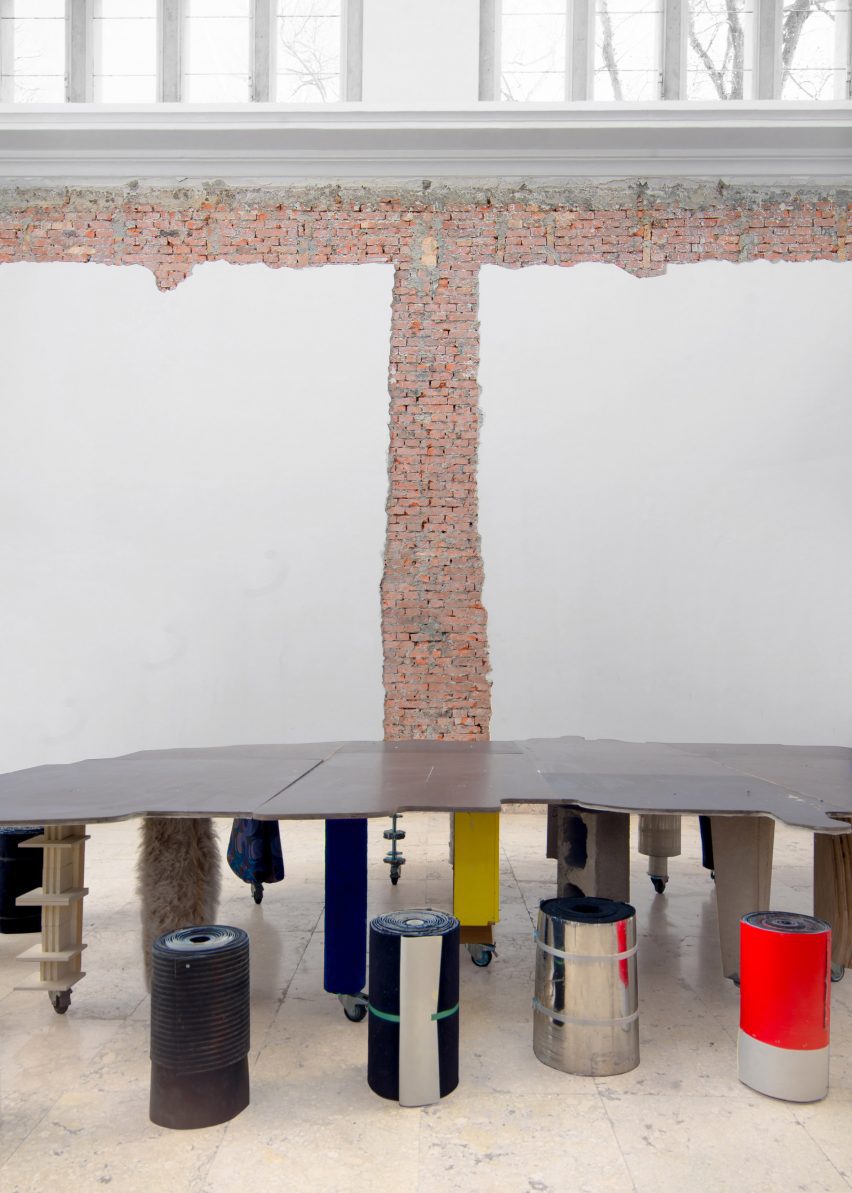
Makele said the aim was to encourage architects to engage more closely with the process of building and maintaining.
"There's a very political dimension to it," said Makele.
"It's not just about remodelling, but about transforming the discipline of architecture. We need to connect to social actors and engage in the processes of spatial production."
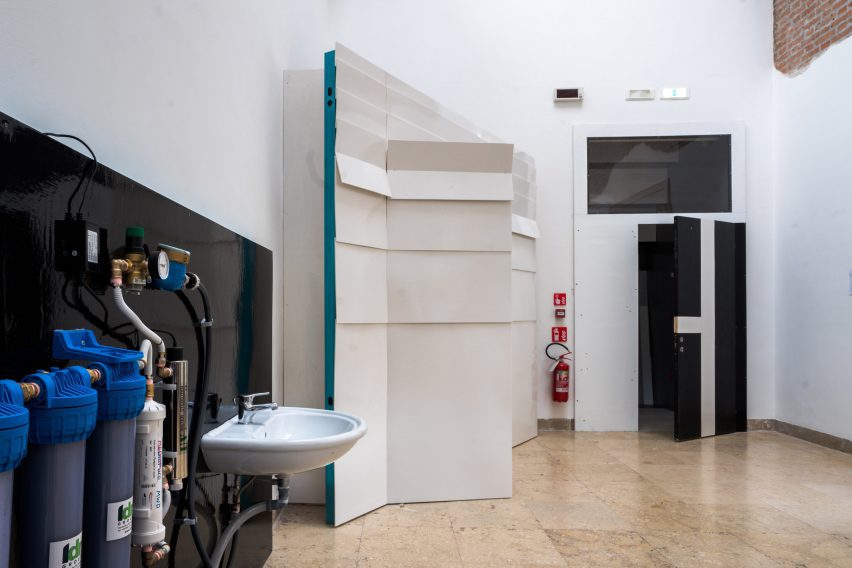
The German pavilion is one of 30 national pavilions that can be found in the Giardini, one of the two main venues where the Venice Architecture Biennale takes place.
Last year, during the art biennale, the pavilion hosted an installation by artist Maria Eichhorn. The piece saw parts of the building fabric removed, to highlight how the former Bavarian pavilion was remodelled in 1938 by the Nazis.
These changes remain visible in Open for Maintenance, to reinforce the curatorial concept of squatting in the pavilion "as found".
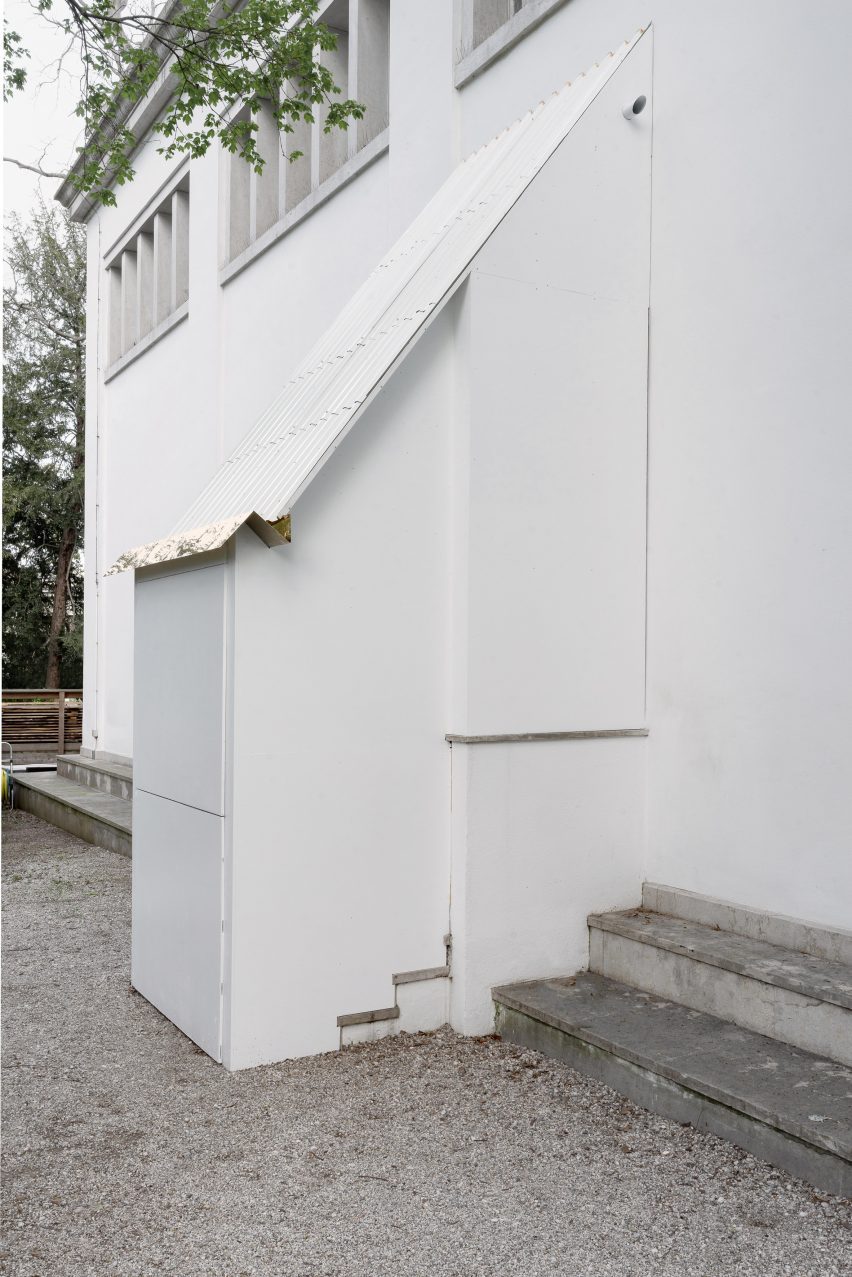
Other national pavilions in the Giardini include those of the UK, Australia, the Nordic countries and the USA.
Zaha Hadid Architects principal Patrik Schumacher has criticised all of these pavilions as being part of what he calls an "anti-architectural biennale" where participating countries "refuse to show the work of their architects". The German pavilion curators declined to respond.
The Venice Architecture Biennale takes place from 20 May to 26 November 2023. See Dezeen Events Guide for information about the event, plus a list of other architecture and design events taking place around the world.